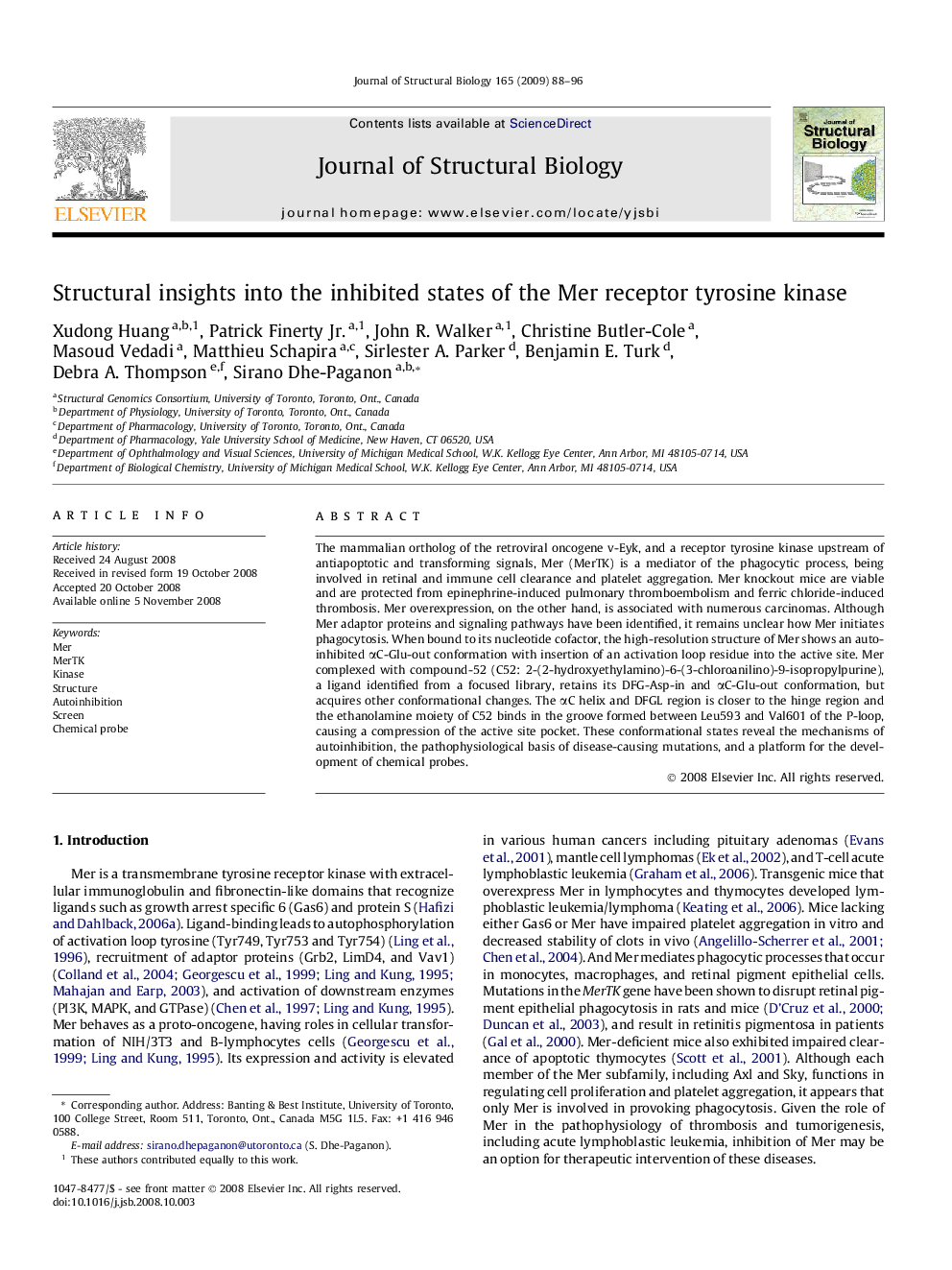| Article ID | Journal | Published Year | Pages | File Type |
|---|---|---|---|---|
| 5915111 | Journal of Structural Biology | 2009 | 9 Pages |
Abstract
The mammalian ortholog of the retroviral oncogene v-Eyk, and a receptor tyrosine kinase upstream of antiapoptotic and transforming signals, Mer (MerTK) is a mediator of the phagocytic process, being involved in retinal and immune cell clearance and platelet aggregation. Mer knockout mice are viable and are protected from epinephrine-induced pulmonary thromboembolism and ferric chloride-induced thrombosis. Mer overexpression, on the other hand, is associated with numerous carcinomas. Although Mer adaptor proteins and signaling pathways have been identified, it remains unclear how Mer initiates phagocytosis. When bound to its nucleotide cofactor, the high-resolution structure of Mer shows an autoinhibited αC-Glu-out conformation with insertion of an activation loop residue into the active site. Mer complexed with compound-52 (C52: 2-(2-hydroxyethylamino)-6-(3-chloroanilino)-9-isopropylpurine), a ligand identified from a focused library, retains its DFG-Asp-in and αC-Glu-out conformation, but acquires other conformational changes. The αC helix and DFGL region is closer to the hinge region and the ethanolamine moiety of C52 binds in the groove formed between Leu593 and Val601 of the P-loop, causing a compression of the active site pocket. These conformational states reveal the mechanisms of autoinhibition, the pathophysiological basis of disease-causing mutations, and a platform for the development of chemical probes.
Related Topics
Life Sciences
Biochemistry, Genetics and Molecular Biology
Molecular Biology
Authors
Xudong Huang, Patrick Jr., John R. Walker, Christine Butler-Cole, Masoud Vedadi, Matthieu Schapira, Sirlester A. Parker, Benjamin E. Turk, Debra A. Thompson, Sirano Dhe-Paganon,
